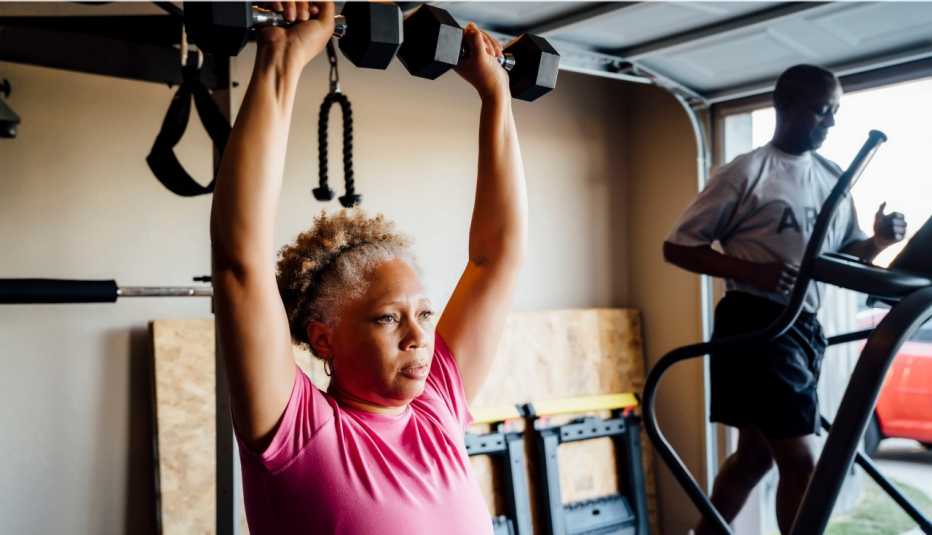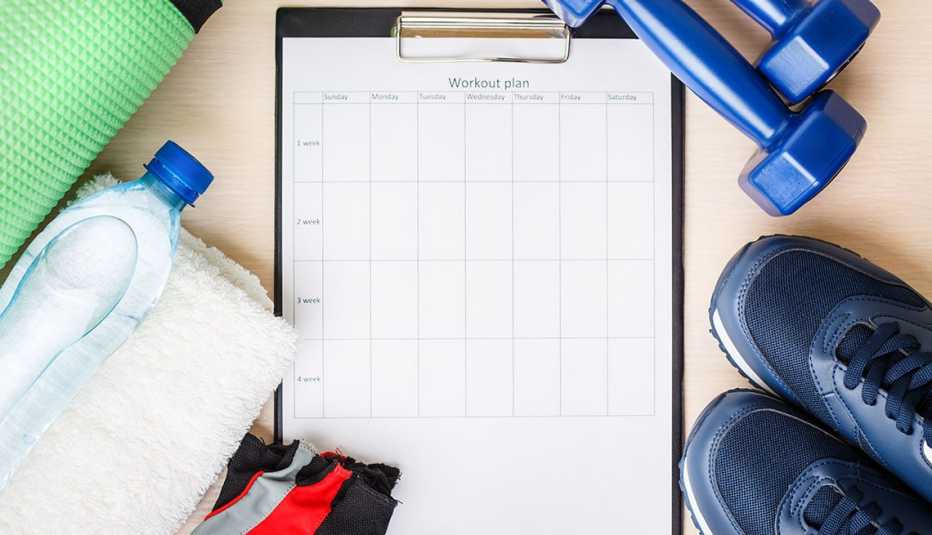AARP Hearing Center
You already know that pumping iron builds muscle mass, which in turn can help stave off age-related weight gain. And you may have heard of its connection to longevity. But recent research shows that lifting weights also offers a bevy of other proven health benefits, from fending off depression to lowering your risk of type 2 diabetes. Among the surprising findings? That weight training may benefit your heart more than cardio workouts and that it appears to literally thicken a specific part of the brain — not unlike lifting dumbbells might build up a bicep — helping to fend off mild cognitive impairment, a precursor to Alzheimer's disease. Here are some other surprising benefits, which are great reasons to add a little strength training to your weekly routine.
Benefit No. 1: It boosts your mood
Resistance training may be protective against depression and anxiety, a new study published earlier this month suggests. When researchers examined 1,100 women ages 45 to 69, they found that those with low upper- and lower-body strength were more likely to show symptoms of both disorders. Another Harvard analysis of 33 studies involving more than 1,800 people, published in JAMA Psychiatry, found that those with mild to moderate depression who pumped iron at least twice a week saw significant reductions in their symptoms, compared with those who didn't. “We think it's so powerful both because it increases blood flow to the brain and it also releases mood-enhancing brain hormones such as norepinephrine and dopamine,” says JoAnn Pinkerton, M.D., director of the Midlife Health Center at the University of Virginia Health System in Charlottesville, Va., and executive director of the North American Menopause Society.
Benefit No. 2: It lowers your risk of type 2 diabetes
Resistance training builds muscle mass, which enhances insulin sensitivity. “There are two places your body stores carbohydrates — your muscles and your liver,” says Sheri Colberg-Ochs, professor emerita of exercise science at Old Dominion University in Norfolk, Va. If you don't have much muscle mass, those carbohydrates end up spilling out into your bloodstream, raising blood glucose levels, or being stored by your body as fat. “Most of the time, the fat ends up in your central abdomen, which makes you even more insulin resistant,” Colberg-Ochs adds. But if you have muscle mass, these carbohydrates can go into your muscles and get used through either aerobic or resistance training exercises. It doesn't take much to see results, either. Indeed, a Japanese study published this past March in the Journal of Diabetes Investigation found that when older people in their 60s engaged in low-intensity resistance training twice a week for 16 weeks, they had significant improvements in their blood glucose levels.



































































